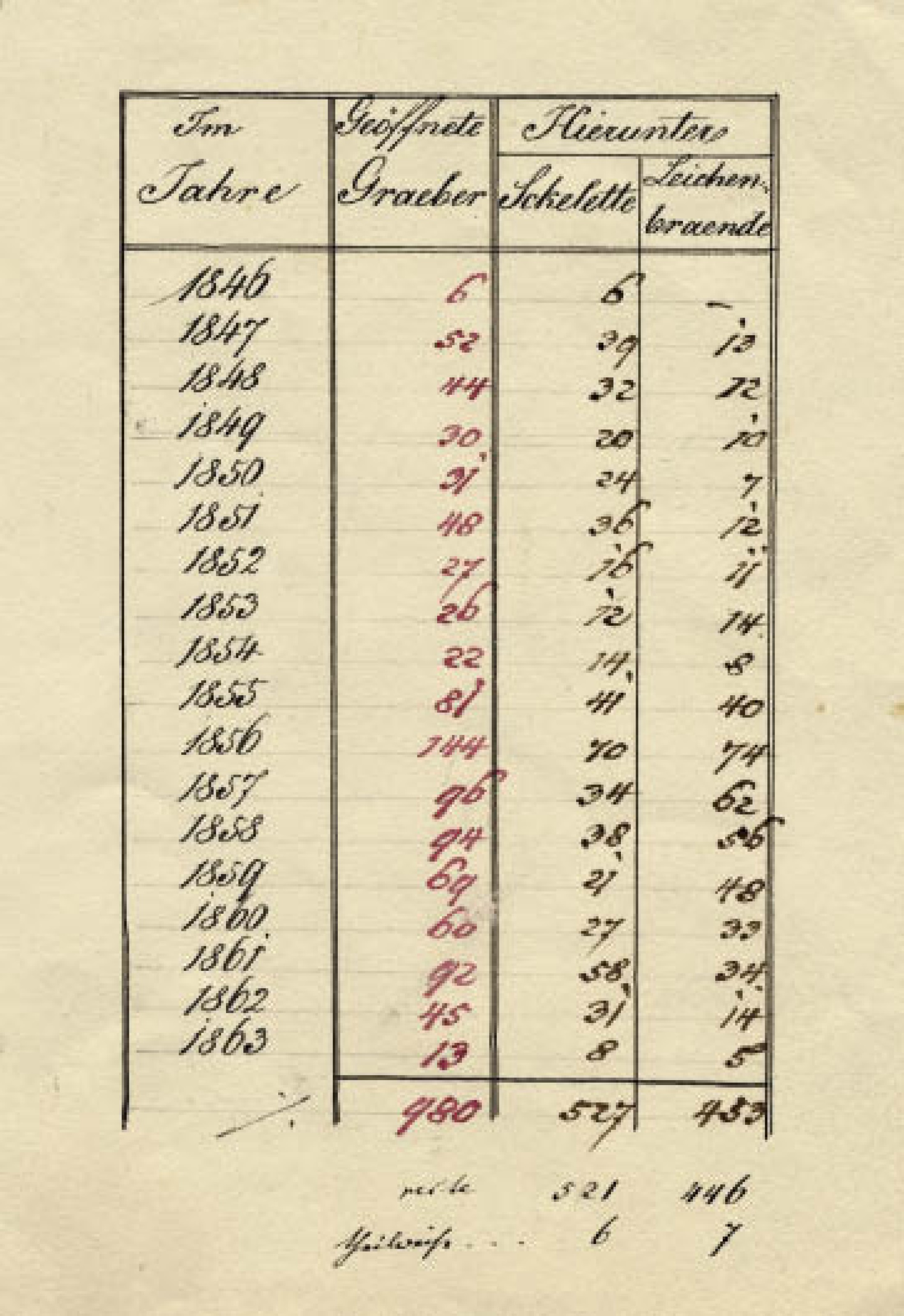The discovery of the burial site
The list of those who have furthered research in Hallstatt is a long one. At first, it was mainly employees of the saltworks who took an interest in the cultural heritage of the place. Among them, Johann Georg Ramsauer is of particular importance. Later on, the Hallstatt Museum Association was established. With the foundation of the Natural History Museum, Vienna, the necessary research facilities became available, and this institution developed a major centre for Hallstatt research.First finds from Hallstatt
Finds from Ramsauer’s excavations
First finds from Hallstatt
In Austria as elsewhere, the rediscovery of Antiquity aroused a pronounced interest in prehistoric artefacts, and finds from Hallstatt attracted scholars’ attention as far back as the Renaissance. Coin finds were reported around 1600, and at about the same time ‘antique’ weapons from Hallstatt made their way into the art cabinet of Emperor Rudolph. Confirmed reports at the beginning of the 18th century relate to archaeological grave finds on the high mountain, then interpreted as Roman or medieval.The oldest reports of finds from the High Valley above Hallstatt village are found in the Salt Mine chronicle (Salzberg Chronical) compiled by Johann B. Riezinger, who was pit foreman from 1687 to 1707, and later became chief administrator. He briefly mentions that a skeleton with a lance was found in 1710. Mine records repeatedly report on old finds from the salt mine, of which the most spectacular was the prehistoric miner discovered in 1734.
Finds from Ramsauer’s excavations
So archaeological finds from the High Valley had been known long before Johann Georg Ramsauer discovered ‘his’ first graves adjacent to the salt mine. They were discovered by chance, and not in the course of systematic excavations. Shortly before 1800, a small collection of remarkable finds arrived in the Kremsmünster monastery. In 1830, a relatively large hoard dating from the 13th century BC, with many bronze items, was discovered on a path northwest of the salt mine; unfortunately it was sold as scrap metal and melted down.Between 1824 and 1831, Bergmeister Karl Pollhammer performed occasional collections and amateurish excavations in the northeastern part of the cemetery. Ramsauer later designated the area as a ‘destroyed field of corpses’. From the same time, we know of items in the collections of Moriz von Az and Father Johann Hofmeister from Pichl, that were consigned to the Museum Francisco-Carolinum in Linz, as were the items unearthed by Pollhammer.
(Kern, A.)


